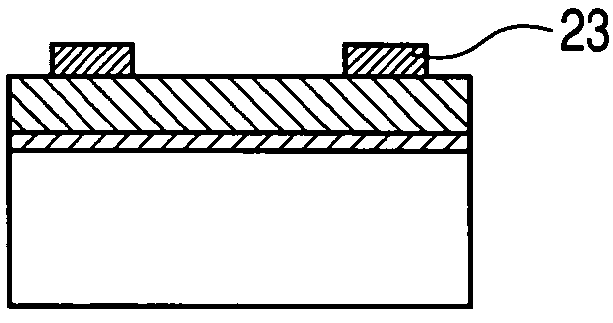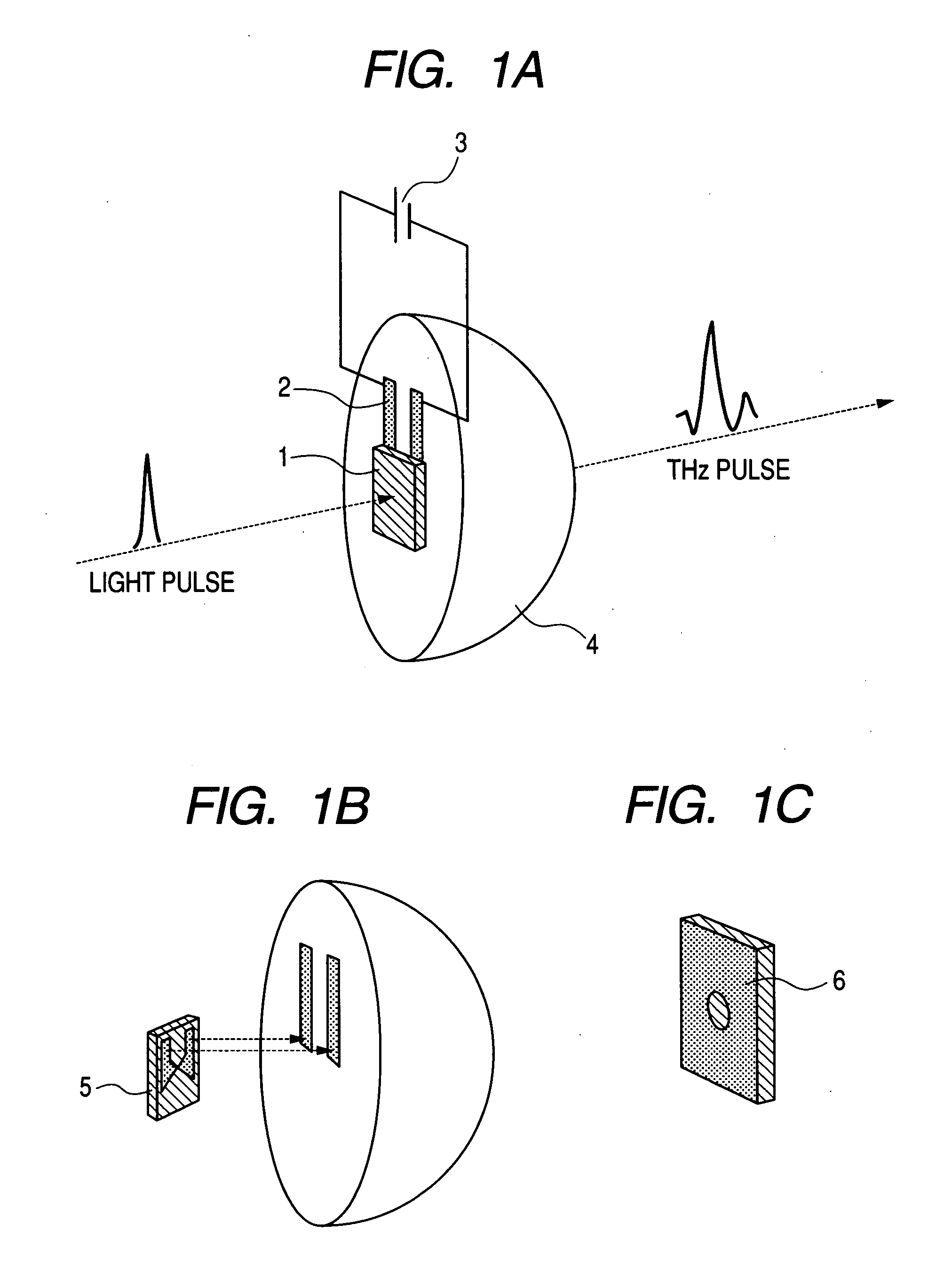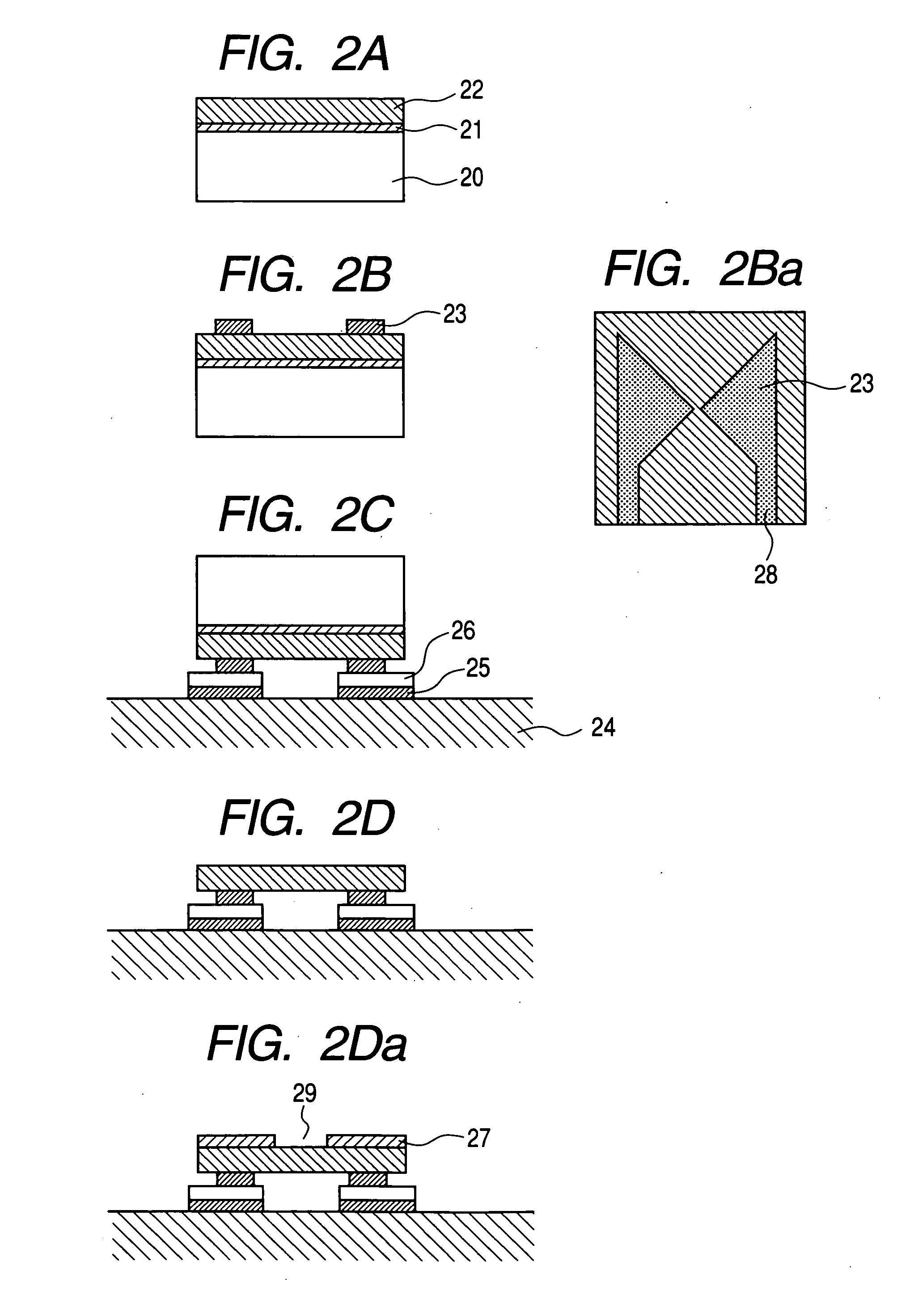Photo-semiconductor device and method of manufacturing the same
a photo-semiconductor and semiconductor technology, applied in the field of photo-semiconductor, can solve the problems of not being able to use such an ideal structure, not being able to directly form a photoconductive film, and not being able to use glass substrates to form photoconductive films, etc., to achieve improved thz radiation efficiency, low cost, and improved thermal characteristics of elements
- Summary
- Abstract
- Description
- Claims
- Application Information
AI Technical Summary
Benefits of technology
Problems solved by technology
Method used
Image
Examples
example 1
[0030] In this example, a photoconductive element is directly and integrally formed on an Si lens in order to improve the radiation efficiency from the photoconductive switch to space. FIG. 1A is a schematic perspective view of the ultimately integrally formed element. Two Ti / Au electrodes 2 are formed on the bottom surface of a semispherical lens 4 made of electrically highly resistive Si in order to supply a bias voltage. The photoconductive element 1 is integrally formed to show a configuration as illustrated in FIG. 1A where an antenna 5 is formed with a gap of 5 μm arranged to separate it into two parts on the surface of a GaAs layer grown at low temperature (LT-GaAs) as photoconductive film, as illustrated in FIG. 1B, and brought into electrode contact with bias voltage supply lines 2.
[0031] The photoconductive film shows a thickness of about 1.5 μm after removing the GaAs substrate that was used for epitaxial growth. When the photoconductive element 1 is transferred onto the...
example 2
[0045] In the second example, a film type photoconductive element like the one prepared in Example 1 is bonded to a thermally highly conductive substrate in order to prevent the characteristics of the element from being degraded by elevated temperatures.
[0046]FIGS. 3A, 3B, 3C and 3D are schematic illustrations of an embodiment of integrated device according to the invention and prepared in Example 2, showing the device in different manufacturing steps. The components same as those of the embodiment of example 1 are denoted respectively by the same reference symbols and will not be described further. The process is the same as that of Example 1 down to the step of forming an antenna as shown in FIGS. 3A and 3B. Referring now to FIG. 3C, after cutting out a chip, the antenna is bonded by using a resin adhesive or the like 31 at the front surface thereof to a hold substrate 30 that is typically made of glass and then the GaAs substrate is removed by means of a technique similar to the...
example 3
[0049] In this example, photoconductive elements according to the invention are applied to an integrated type THz wave sensing module as shown in FIGS. 5A and 5B. The configuration for the module will be described below by referring to FIG. 5A. Optical waveguides 55, 56, 62 and an optical divider / coupler 57, 58 are three-dimensionally formed in a substrate 50, which is made of a transparent polymer material such as polyimide with a modified refractive index. The work may be prepared by molding some of the components and assembling them or by using a technique of forming three-dimensional waveguides by means of a laser. Materials that can be used include quartz, glass, plastics and polymers, some of which may not be transparent. It is advisable to use a material that is practically free from loss of light at least for the waveguides. It is desirable to apply a material (not shown) that shows excellent high frequency characteristics such as polyimide or BCB to the surface where coplan...
PUM
 Login to View More
Login to View More Abstract
Description
Claims
Application Information
 Login to View More
Login to View More - R&D
- Intellectual Property
- Life Sciences
- Materials
- Tech Scout
- Unparalleled Data Quality
- Higher Quality Content
- 60% Fewer Hallucinations
Browse by: Latest US Patents, China's latest patents, Technical Efficacy Thesaurus, Application Domain, Technology Topic, Popular Technical Reports.
© 2025 PatSnap. All rights reserved.Legal|Privacy policy|Modern Slavery Act Transparency Statement|Sitemap|About US| Contact US: help@patsnap.com



